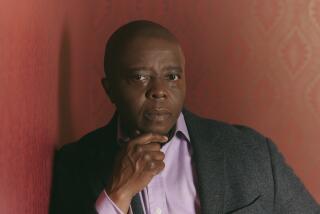PERSPECTIVE ON POLICE : Will They Do the Right Thing? : The Rodney King beating tape was a reality check, shaking up the trust between the public and the police.
- Share via
In 1962, Los Angeles Police Chief William H. Parker told an interviewer that the television program “Dragnet” offered the people of the United States an accurate picture of the policeman “as he really is.” Parker, whose staff participated in the editing of the scripts and in their filming, told Donald McDonald of the Center for the Study of Democratic Institutions that the program “showed the true portrait of the policeman as a hard-working, selfless man, willing to go out and brave all sorts of hazards and work long hours to protect the community.”
George Holliday’s videotape of the beating by police of Rodney King on March 3, 1991, forever shattered the “Dragnet” image of the Los Angeles police as cool and neutral professionals, who followed the letter of the law and sought “just the facts.” Few people in any part of the America nurtured on “Dragnet,” or on its grittier and more realistic successors like “Hill Street Blues,” had come to expect anything like the beating of Rodney King. Many, shocked by what they saw, asked themselves, is this what cops are really like?
But without documentation like Holliday’s videotape, the LAPD’s “Dragnet” image endured through the 1960s into the ‘90s, despite abundant reports of police brutality before the Los Angeles riots of August, 1965. Although not as bad as the 1992 riot in Los Angeles, the Watts riot was bad enough. Thirty-four persons died, 1,032 were injured, 3,952 were arrested, hundreds of buildings were damaged and tens of millions in property damage could be counted.
A commission headed by former CIA Director John McCone was established to examine the causes of the Watts riot. The “Negro” witnesses pointed to a variety of social obstacles. But the main problem, one after another said, was with the racist attitudes and malicious behavior of the LAPD. “The bitter testimony we have heard,” the commission wrote, “evidences a deep and longstanding schism between a substantial portion of the Negro community and the police department.”
The recurring allegation was police brutality, but McCone didn’t believe it: This was, after all, the “Dragnet” LAPD, regarded as the nation’s most professional police agency. When Negro witnesses singled out William H. Parker as a “focal point,” asserting that he evidenced “a deep hatred of the Negro community,” McCone was puzzled. He thought Parker was a fine professional. Besides, the allegations could not be documented and were denied by Parker and other police witnesses. Even the late Paul Jacobs, a tenacious investigative reporter of the 1960s, could not find hard evidence of police brutality.
By contrast, a novice cameraman’s videotape made the March 3, 1991, beating of Rodney King an unforgettable, even defining, event in the history of the United States. The Simi Valley trial’s acquittal of the police, followed by the 1992 riots, and now the federal trial in Los Angeles, have etched Rodney King’s identity in the American consciousness. But the same cannot be said of George Holliday, who shot and made public the videotape. However much we may be pained by the images Holliday recorded, and by the material and spiritual damage of the 1992 riots, Los Angeles and the nation owe Holliday a debt.
The fundamental contribution of the Holliday videotape is that the doubters among us now know that police brutality is a fact, and that allegations of such conduct cannot simply be written off.
The most significant consequences of this recognition are two: First, police commanders throughout the country--most of whom were as shocked as the rest of us by the Holliday tape--have undergone a reality check. They have been reviewing their training, policies and practices to ensure that they do nothing to encourage or tolerate the brazen use of force we saw played out on the tape. Recent incidents in Los Angeles and other cities suggest that much remains to be done to improve police attitudes and conduct. But the videotape remains indelibly inscribed in the minds of chiefs--and cops--across the country.
Second, politicians and the public have come to realize that they simply cannot trust that the good faith of the cops will lead them to do the right thing. Policing in the inner city is incredibly daunting. As drugs, violent crime and the use of guns have escalated in our cities, cops have been urged to make “war” on their “enemies.” Nowhere was this more true than in Los Angeles during the 14-year tenure of Daryl F. Gates, the nation’s last big-city police chief-for-life, who answered to nobody.
Nobody keeps accurate numbers on whether incidents of police brutality have risen or fallen since March 3, 1991. What is clear, however, is that our awareness of police brutality, and our national intolerance of it, have dramatically heightened over the past two years. For that, the identity of George Holliday--the accidental hero who made the most momentous movie in the history of Los Angeles--deserves to be more than the answer to a trivia question.
More to Read
Sign up for Essential California
The most important California stories and recommendations in your inbox every morning.
You may occasionally receive promotional content from the Los Angeles Times.













